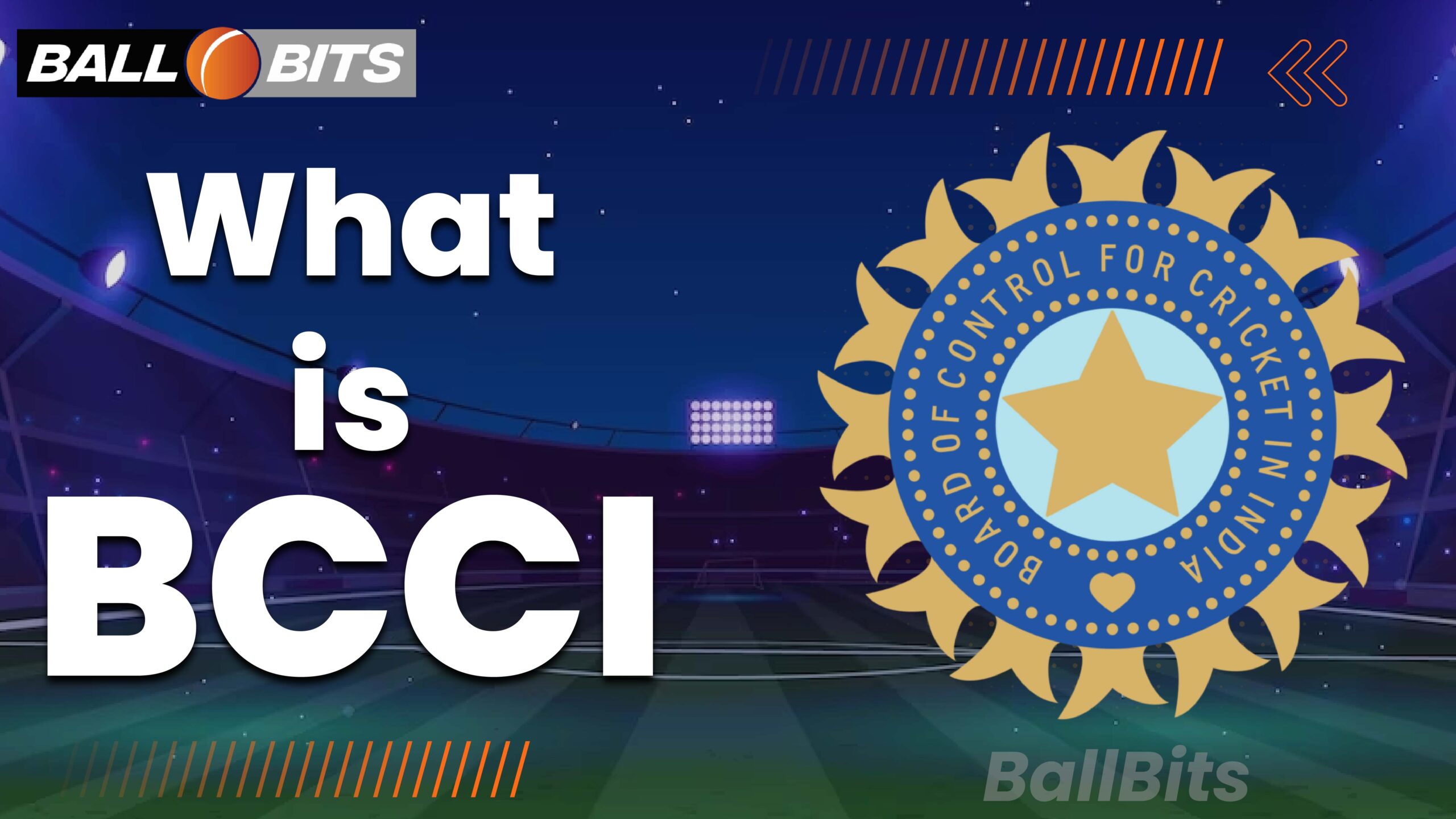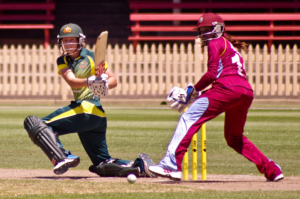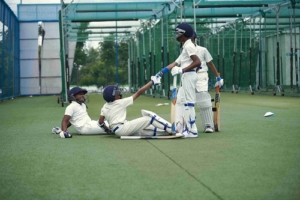
In this blog you’ll understand What is BCCI & it’s importance, responsibilities in Indian cricket team.
Are you a fan of cricket? If you’re from India, chances are the answer is a resounding yes. Cricket is a beloved and integral part of Indian culture, and the Board of Control for Cricket in India (BCCI) plays a huge role in the organization and development of the sport in the country.
In this blog, we’ll take a closer look at the BCCI and its role in the world of cricket. We’ll discuss the history of the organization, its responsibilities and achievements, and the various tournaments and leagues it oversees. We’ll also touch on the Indian national cricket team and its successes over the years.
What Is BCCI?
The BCCI is the organization responsible for governing cricket in India. It is headquartered at the Cricket Centre in the Wankhede Stadium in Mumbai and is considered the wealthiest cricket governing body in the world. It is a member of the Big Three, alongside Cricket Australia and the England and Wales Cricket Board.
The BCCI was formed in December 1928 and consists of state cricket associations, which select representatives to elect the BCCI president. Grant Govan was the first president and Anthony De Mello was the first secretary. The BCCI is a private, autonomous organization and is not subject to the National Sports Federation of India. It receives no financial support from the Indian government.
The BCCI is responsible for managing the Indian cricket team, including selecting players and coaches and organizing matches. It handles both the men’s and women’s teams. An official committee is in charge of selecting the squads, coaching staff, umpires, and specific players for all Indian teams.
The BCCI manages four Indian national cricket teams that compete in international tournaments: the men’s team, the women’s team, the under-19 men’s team, and the under-19 women’s team. It also oversees the India A and India B developmental teams. The BCCI is responsible for organizing and scheduling matches for these teams and for organizing every season of domestic cricket in India.
The BCCI works with other boards to organize international fixtures and controls the National Cricket Academy in Bangalore. It is known for its high-performance standards and provides financial support, including scholarships, for the entire team.
Cricket Zones of BCCI
The BCCI is made up of 27 state associations, three of which are non-playing members. It is divided into five zones: East, West, North, South, and Central. These zones represent different regions of India.
Domestic Cricket Tournament Host By BCCI
The BCCI hosts several domestic cricket tournaments in India, including the Indian Premier League (IPL), the Syed Mushtaq Ali Trophy (SMAT), the Vijay Hazare Trophy, the Deodhar Trophy, and the Ranji Trophy.
The IPL is a Twenty20 cricket league featuring eight teams representing different cities in India. The SMAT is a Twenty20 tournament featuring teams from various states in India. The Vijay Hazare Trophy is a one-day tournament featuring state teams.
The Deodhar Trophy is a limited-overs tournament featuring teams selected by the BCCI. The Ranji Trophy is a first-class cricket tournament featuring teams representing different states in India.
Indian Premier League
The BCCI launched the Indian Premier League (IPL) in 2008, a franchise Twenty20 cricket league that has become one of the most successful and lucrative sports leagues in the world.
It attracts top players from around the globe and generates significant revenue for the BCCI.
The IPL has a special window in the International Cricket Council’s Future Tours Program, meaning that international cricket is largely suspended during the tournament.
Posts and Members in the Committee of BCCI
The BCCI is led by a president, vice president, secretary, joint secretary, and treasurer.
The president presides over meetings and signs the annual audit report. In the president’s absence, the vice president takes on the responsibilities of the president.
The secretary is responsible for keeping minutes of meetings and maintaining records, while the joint secretary assists the secretary and may also take minutes if requested.
The treasurer manages the finances of the BCCI, including funds, sponsorships, and expenditures, and prepares balance sheets and financial statements.
Women’s Cricket
In 2007, the Women’s Cricket Association of India merged into the BCCI after the International Women’s Cricket Council merged into the International Cricket Council in 2006.
The India women’s national cricket team represents India in international women’s cricket. The team made its debut in the 1978 Women’s Cricket World Cup, which was held in India.
Diana Edulji was the team’s first captain in One Day Internationals. The team has achieved notable successes, including appearances in the finals of the 2005 Women’s Cricket World Cup in South Africa and the 2017 Women’s Cricket World Cup in England.
India has also hosted 1978, 1997, and 2013 Women’s Cricket World Cups. Mithali Raj is a former captain of the team and the leading run-scorer in One Day Internationals in international cricket.
Jhulan Goswami is a former player and holds the record for the highest number of wickets taken in women’s ODIs.
In October 2022, the secretary of the BCCI, Jay Shah, announced that the BCCI would pay the women’s team players the same amount of money as the men’s team players, with men receiving INR 15 lakh for Test matches, INR 6 lakh for ODIs, and INR 3 lakh for T20Is per match.
Objectives of BCCI
The BCCI, with its headquarters located in the Wankhede Stadium in Mumbai, has the following primary objectives:
- To protect the values of the sport and promote cricket in India and abroad.
- To select skilled players, managers, and coaches for the Indian team who can represent the country internationally.
- To maintain fair play and sportsmanship in all games and tournaments.
- To manage and promote the entire Indian cricket team, including those playing in domestic and international tournaments.
- To track the performance of all Indian players in every match.
Politicians in the BCCI
Over the years, politicians from various political parties have held positions in the BCCI, such as Sharad Pawar of the Nationalist Congress Party, Madhavrao Scindia of the Congress party, and Anurag Thakur of the Bharatiya Janata Party.
The current IPL chairman is Arun Singh Dhumal, the brother of Anurag Thakur. As of October 18, 2022, the incumbent secretary is Jay Shah, the son of India’s Home Minister, Amit Shah.
The current vice-president is Rajiv Shukla of the Congress party, and the treasurer is Ashish Shelar of the BJP.
This phenomenon of politicians being involved in cricket associations is not limited to the BCCI, but also extends to state and regional cricket associations.
For example, the current Indian Prime Minister, Narendra Modi, was briefly the president of the Gujarat Cricket Association from September 16, 2009 to May 30, 2014.
Union minister Jyotiraditya Scindia of the BJP holds a powerful position in the Madhya Pradesh Cricket Association, and his son is the vice-president of the Gwalior Division Cricket Association, which is part of the MPCA.
After the Lodha Committee made recommendations stating that incumbent ministers and MPs could not hold office in the BCCI or state associations, politicians found a way to bypass these guidelines by placing their family members in positions of power, allowing them to indirectly control the associations.
Reforms in BCCI
The BCCI has been criticized for its monopoly practices and has faced allegations of corruption and favouritism. In response, the Supreme Court of India appointed a four-member panel, known as the Committee of Administrators, on January 30, 2017, to oversee the administration of the BCCI and implement the recommendations of the Lodha Committee.
The panel was led by Vinod Rai, a retired civil servant and the former Comptroller and Auditor General of India, and included Ramachandra Guha, Vikram Limaye, and Diana Edulji.
The BCCI has also faced criticism for its resistance to coming under the jurisdiction of the National Anti-Doping Agency (NADA).
However, on August 9, 2019, the BCCI agreed to comply with the anti-doping mechanisms governed by the NADA.
In addition, Sunil Joshi, a former Indian cricket team spinner, was named as the chairman of the national selection panel by the Cricket Advisory Committee (CAC) of the BCCI, replacing M.S.K. Prasad in that role.
Legal Status of BCCI
According to the BCCI, it is an autonomous body and does not receive any funding or grants from the Indian government.
In 2004, the BCCI’s lawyers argued in the Supreme Court of India that the Indian cricket team plays as “the official team of the BCCI and not the official team of India.”
The lawyers also claimed that the BCCI “does not even fly the national flag” and never “uses any national emblem in the activities of the board.”
Despite this, the BCCI recommends its players for prestigious awards such as the Arjuna award and claims not to be a national sports federation.
The BCCI is registered as a society in the state of Tamil Nadu under the Societies Registration Act and denies being subject to Article 12 of the Indian constitution.
From its inception, the BCCI was not sanctioned by the Government of India, but it has functioned as both the governing body of cricket in India and as a representative of India.
It has been alleged that the BCCI uses the emblem of the British Raj without obtaining permission from the Government of India, which is a violation of the Emblem and Names (Prevention of Improper Use) Act, 1950.
Also check out cricket umpire course







